Teachers Bring Home Lessons from Trees
Under a tent that offered shade against a scorching sun, Refugio Manríquez Rosas told 10 visitors from the Chicago area how his family’s tree nursery is helping to save an endangered oak species in Baja California Sur, Mexico.
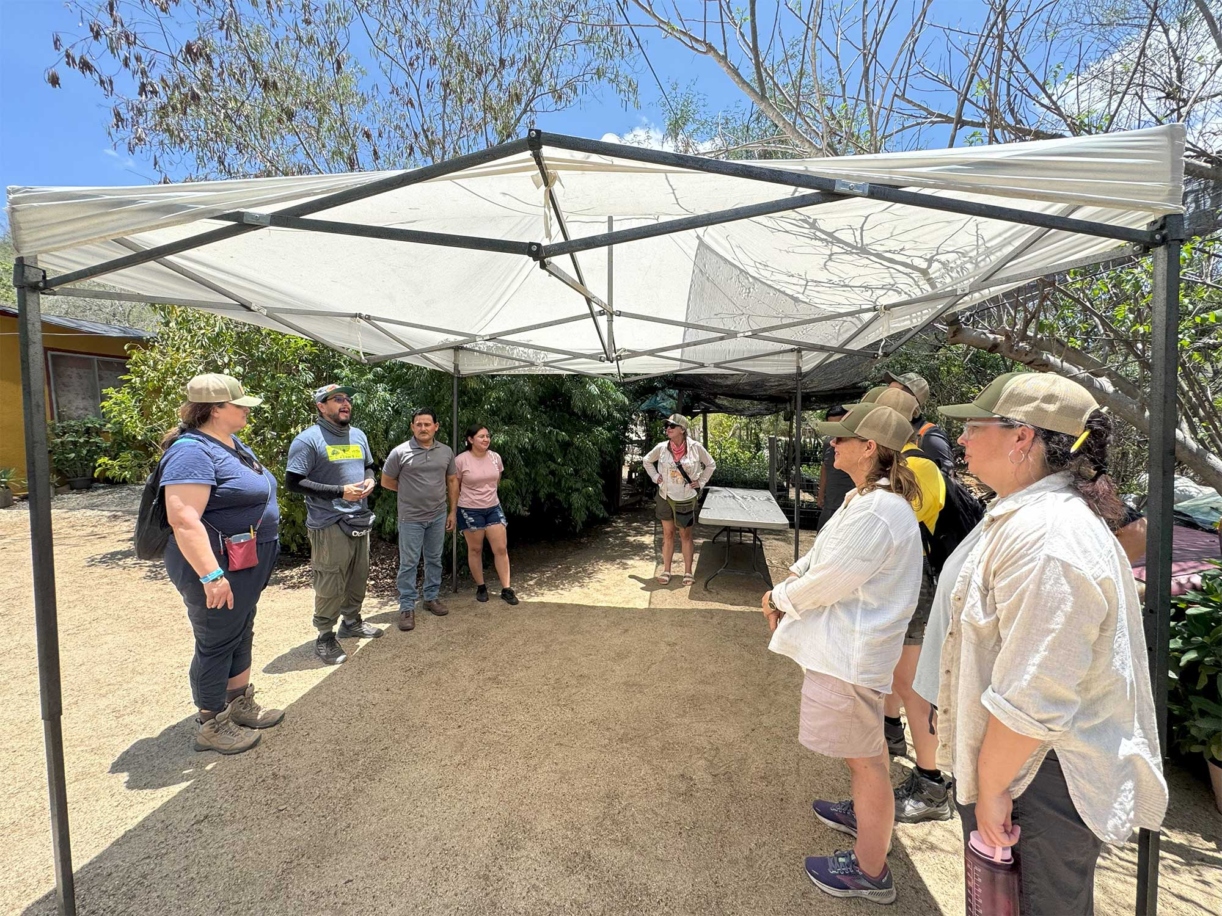
Daniel Pérez Morales (second from the left), Arboretum research collaborator and local lead of the arroyo oak conservation project, introduces Chicago-area teachers to rancher Refugio Manríquez Rosas (third from the left) at his community tree nursery.
The visitors were teachers from middle and high schools, spending a week in Mexico in June with Arboretum staff and collaborators as part of a forest immersion program. The experience will help the educators develop lessons to connect their students to global tree conservation.
“The forest immersion trip will transform how I teach local conservation to my students,” said Hinsdale South High School science teacher Adam Hallihan. “Our time spent with community members and researchers reinforced the need for listening and collaboration to make conservation work succeed.”
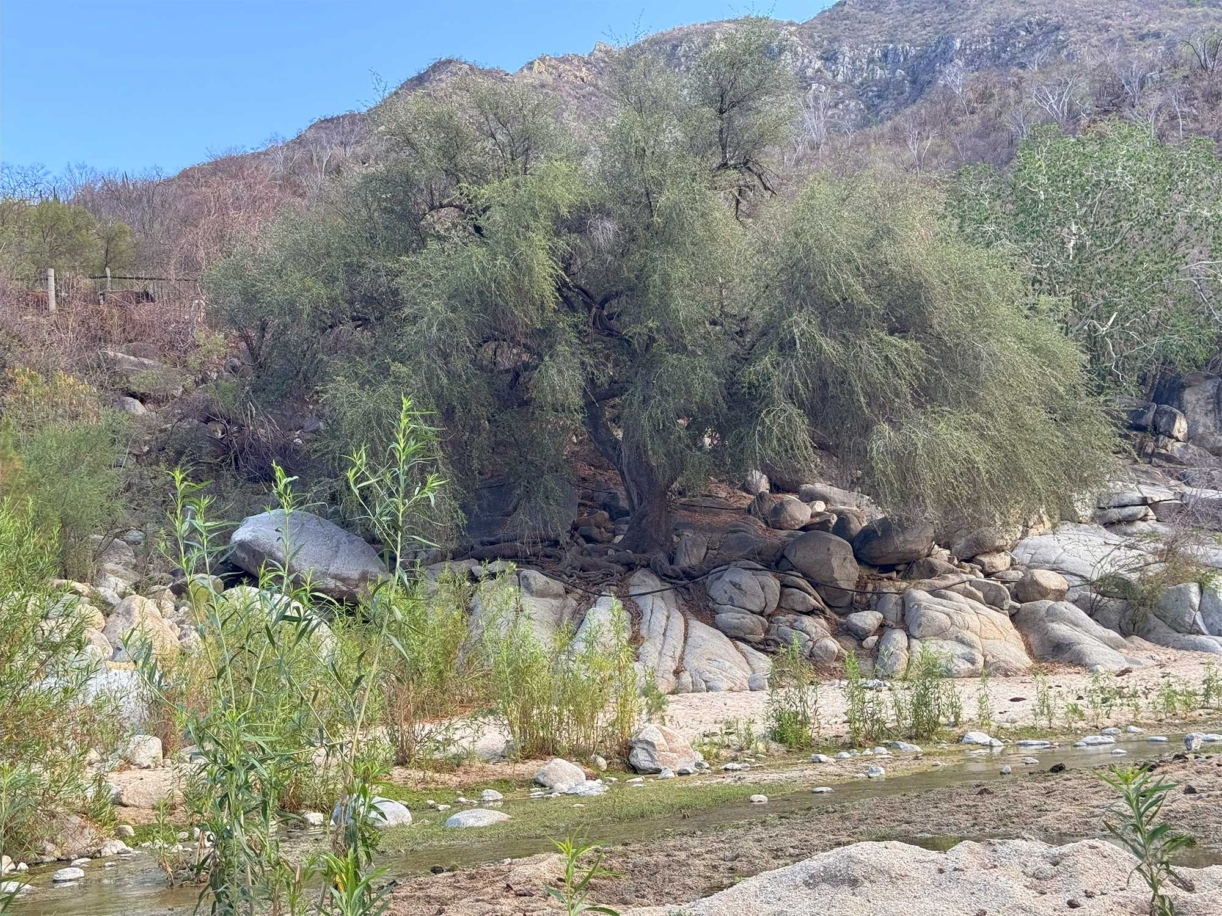
A large arroyo oak tree grows along an arroyo, or seasonal river, in the Mexican state of Baja California Sur. Extreme drought, overgrazing by livestock, and lack of seedling regeneration have put the endangered arroyo oak at risk.
The Manríquez Rosas family’s nursery and ranch “El Chinal Viejo” are in a dry, mountainous region of Baja California Sur, Mexico, in the Sierra de la Laguna Biosphere Reserve, a UNESCO-protected area. There, the teachers learned about collaborative efforts to save the arroyo oak (Quercus brandegeei, known in Spanish as encino arroyero). Extreme drought, overgrazing by livestock, and lack of seedling regeneration are threatening the species with extinction.
“This program has opened my eyes in terms of the struggles involved in conservation activities, even when a community has lots of interest in species conservation,” said Veronica Rundell, 10th and 11th grade teacher at Morton East High School in Cicero. “My students will identify with the people of Baja California Sur and their struggles, and I think they will also become interested in the arroyo oak.”
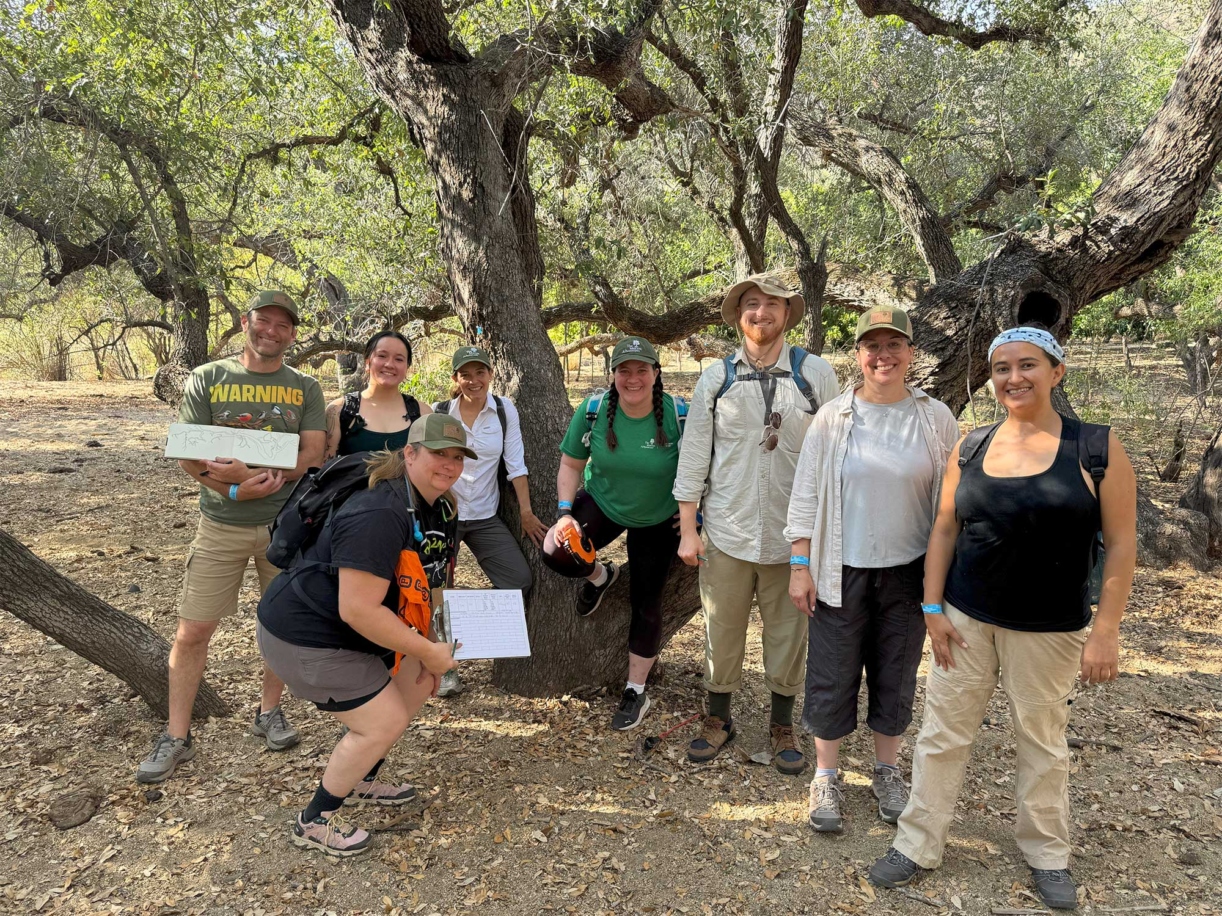
Teachers and program facilitators stand in front of a mature arroyo oak at a local ranch in the Sierra de la Laguna Biosphere Reserve. They learned how to measure the tree’s trunk and canopy.
After a day in the field learning to measure and collect data from mature arroyo oaks, the teachers saw the young seedlings up close at Manríquez Rosas’ nursery, learned about his conservation work with the Arboretum and collaborators, and helped prepare pots for planting. In November, arroyo oak acorns will be planted in 1,500 pots—some of which the teachers prepared—and in two years, they’ll become seedlings.
Once seedlings are two years old, many are distributed to local ranchers during an annual community festival celebrating the arroyo oak. Ranchers plant the trees between September and March, after the rainy season moistens the soil. Other seedlings are used for research and restoration plantings.
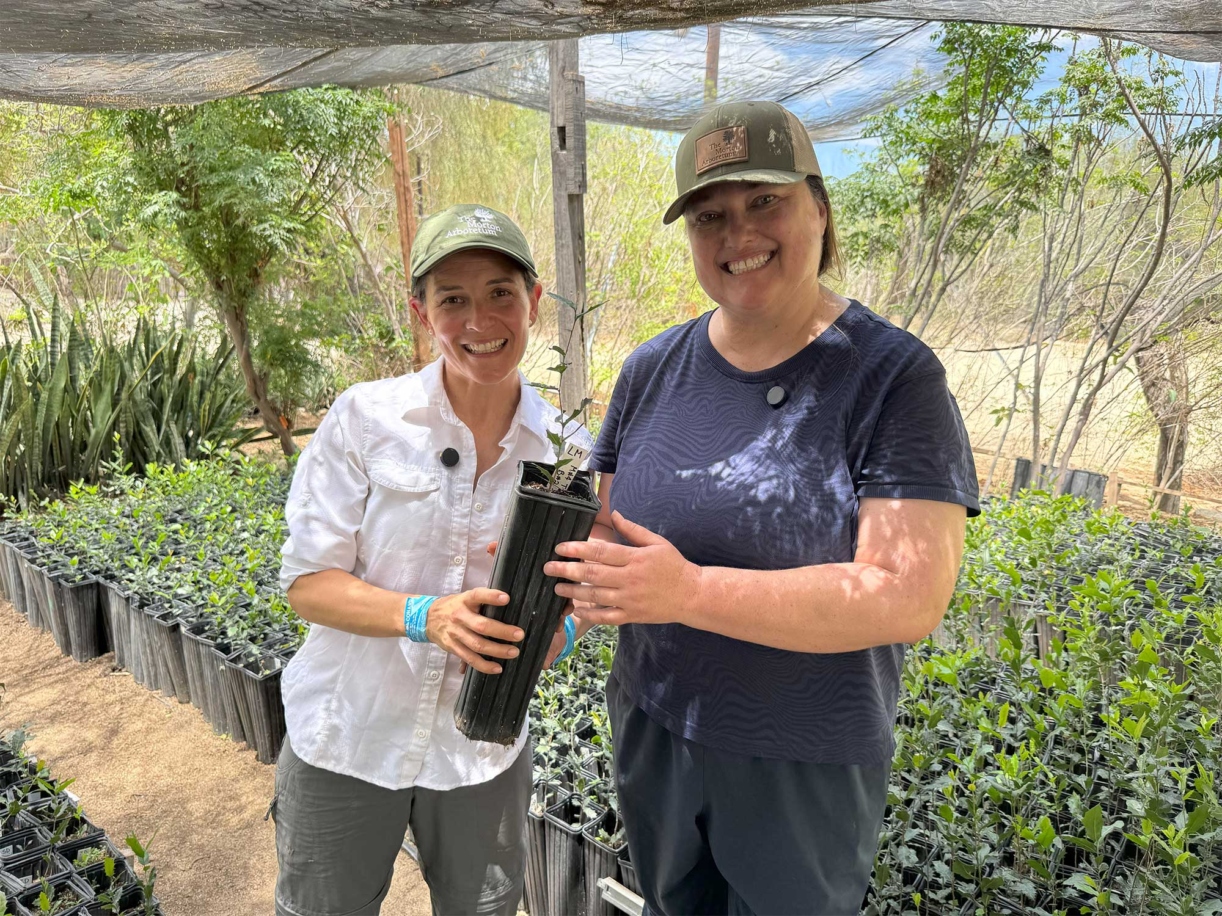
From left, Silvia Alvarez-Clare, PhD, the Arboretum’s Global Tree Conservation Program director, who co-led the forest immersion program, and science teacher Amy Truemper filmed a video about the arroyo oak seedlings to share with Truemper’s students.
“It’s amazing to see [the seedlings at different stages of development] because I’ve never really seen a tree growing. I’ve just seen the end result,” Amy Truemper, a science teacher at Bednarcik Junior High School in Aurora, said in the nursery.
This was the Arboretum’s second forest immersion trip. In March 2024, eight other Chicago-area teachers explored conservation in Costa Rica’s tropical cloud forest. Both programs were supported by grants and in-kind contributions from partner organizations, as well as by the Arboretum. It’s a prime example of how Arboretum donors’ generosity advances not only conservation but also educational work around the world.
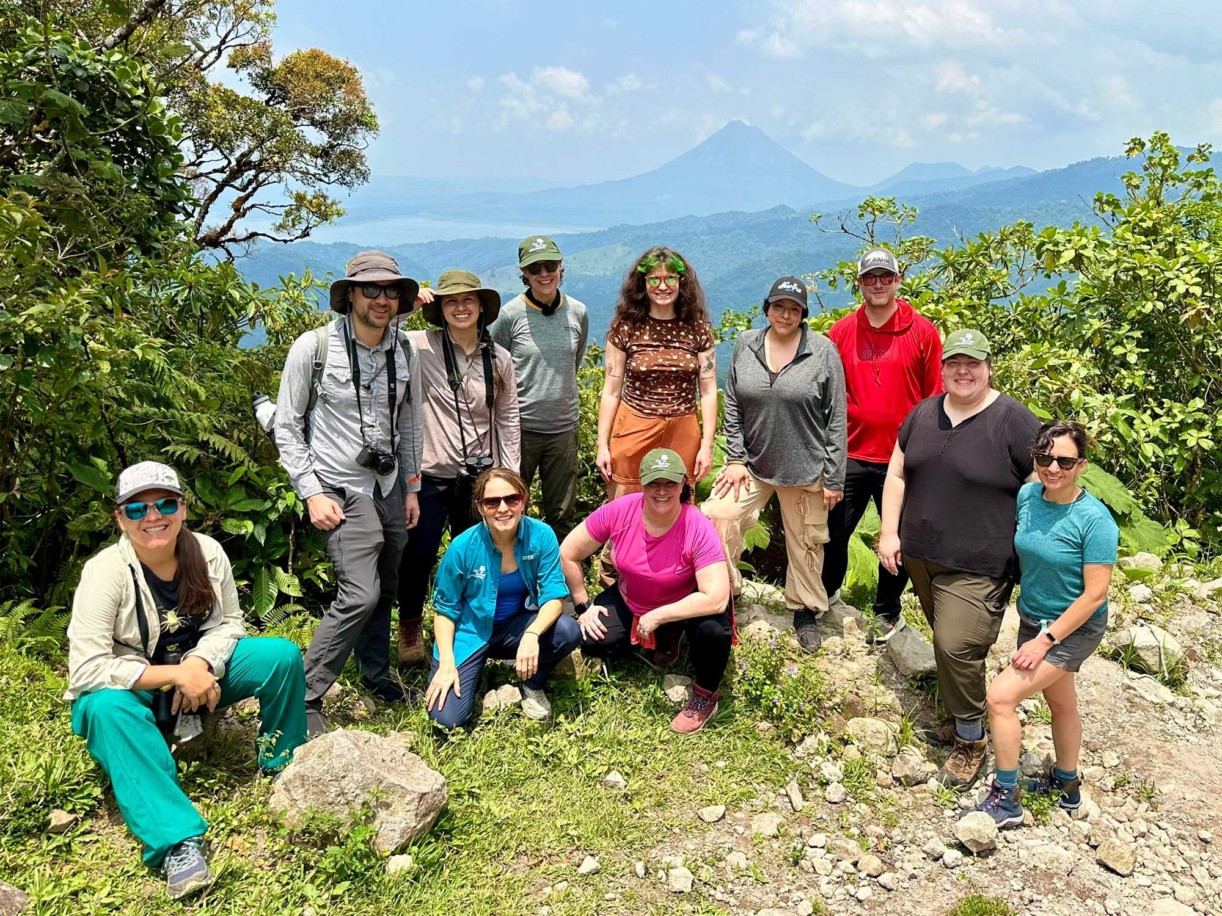
Eight Chicago-area teachers traveled to Costa Rica in March 2024 with staff from the Arboretum for an immersive tropical cloud forest experience to help them develop lessons to connect their students to tree conservation efforts.
“These forest immersion trips are one powerful way the Arboretum supports educators—offering firsthand experiences in tree conservation and related careers to inspire the next generation of tree champions,” said Meghan Wiesbrock, the Arboretum’s senior manager of school and camp programs. Wiesbrock led both programs with Silvia Alvarez-Care, PhD, global tree conservation director.
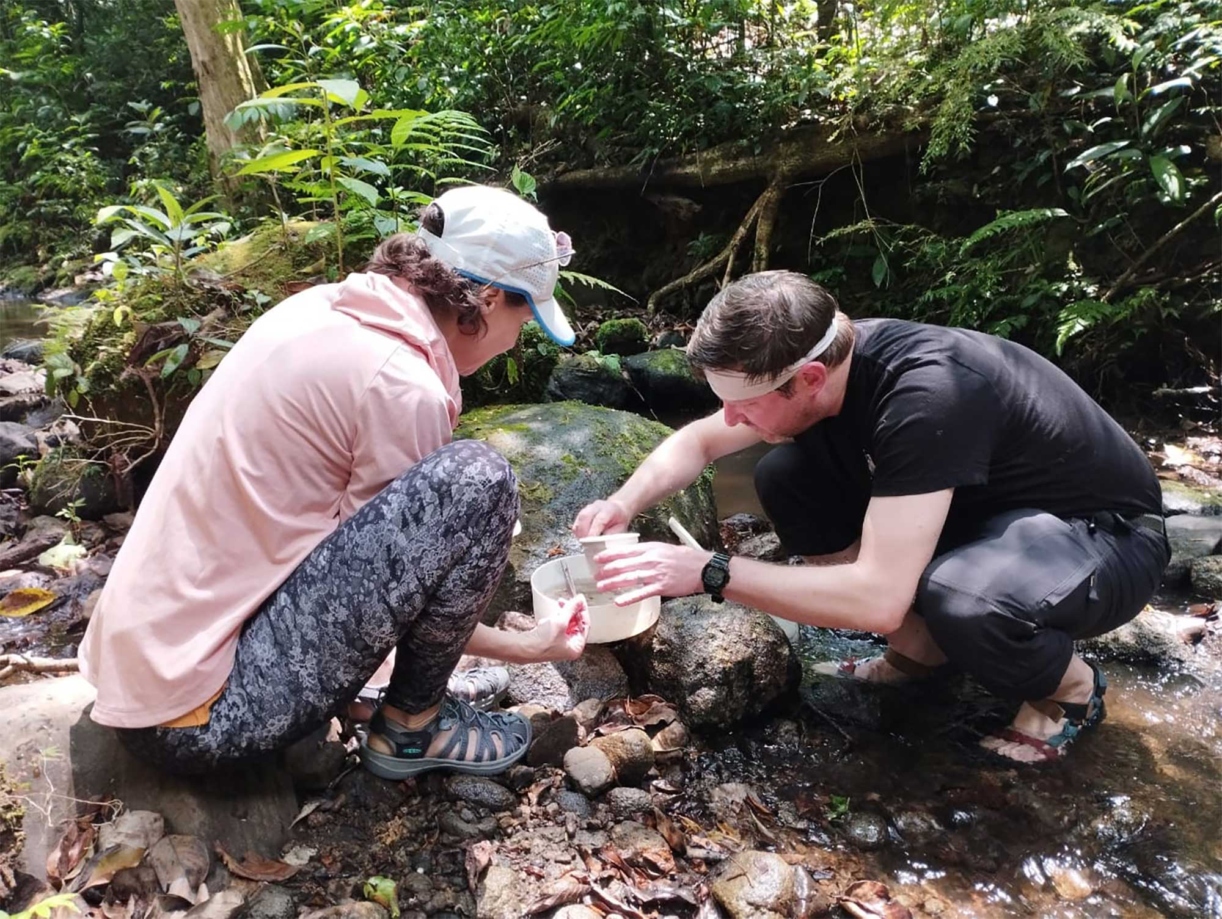
Teachers in the Costa Rica forest immersion program sample water from local streams.
In Costa Rica, teachers took water samples and counted insects, worms, snails, and other macroinvertebrates in local streams to learn how they reflect water quality, visited nurseries for trees of conservation concern, and toured a local coffee farm to learn about its sustainable farming practices. After the weeklong trip, they attended a May 2024 workshop at the Arboretum to use what they had experienced to develop curriculum.
By fall 2024, the teachers were using what they learned in their classroom lessons, leading field trips to the Arboretum’s Herbarium and Schulenberg Prairie and planting trees in partnership with the Arboretum’s Chicago Region Trees Initiative. Others tied their Costa Rica trip to Hispanic Heritage Month and urban bat research.
“I returned to the classroom inspired to share these experiences with my students,” said Karla Menendez, a high school teacher at Von Steuben Metropolitan Science Center in Chicago. She has incorporated mini science readings, vocabulary, and research activities into her school’s ESL curriculum to support students in biology.
The Baja California Sur cohort reunited later in the summer of 2025 to refine their lessons. “The tree measuring activity is something I can bring into my classroom immediately,” said Hinsdale South teacher Hallihan.
The arroyo oak, endemic to Baja California Sur, grows along seasonal rivers, or arroyos, which are especially dry this year due to a lack of rain. The tree is valued by local communities and ranchers as a source of wood for fuel and tools, acorns for food and drinks, and vital shade and forage for livestock.
Since 2016, the Arboretum’s Global Tree Conservation Program has studied the arroyo oak to understand threats to the tree and guide its conservation. Among other research, the project includes fenced exclosures to measure the impact of livestock on seedlings. Overall, the conservation work aims to improve the arroyo oak’s habitat while supporting sustainable livelihoods within its range by working hand-in-hand with farmers, land managers and other stakeholders.
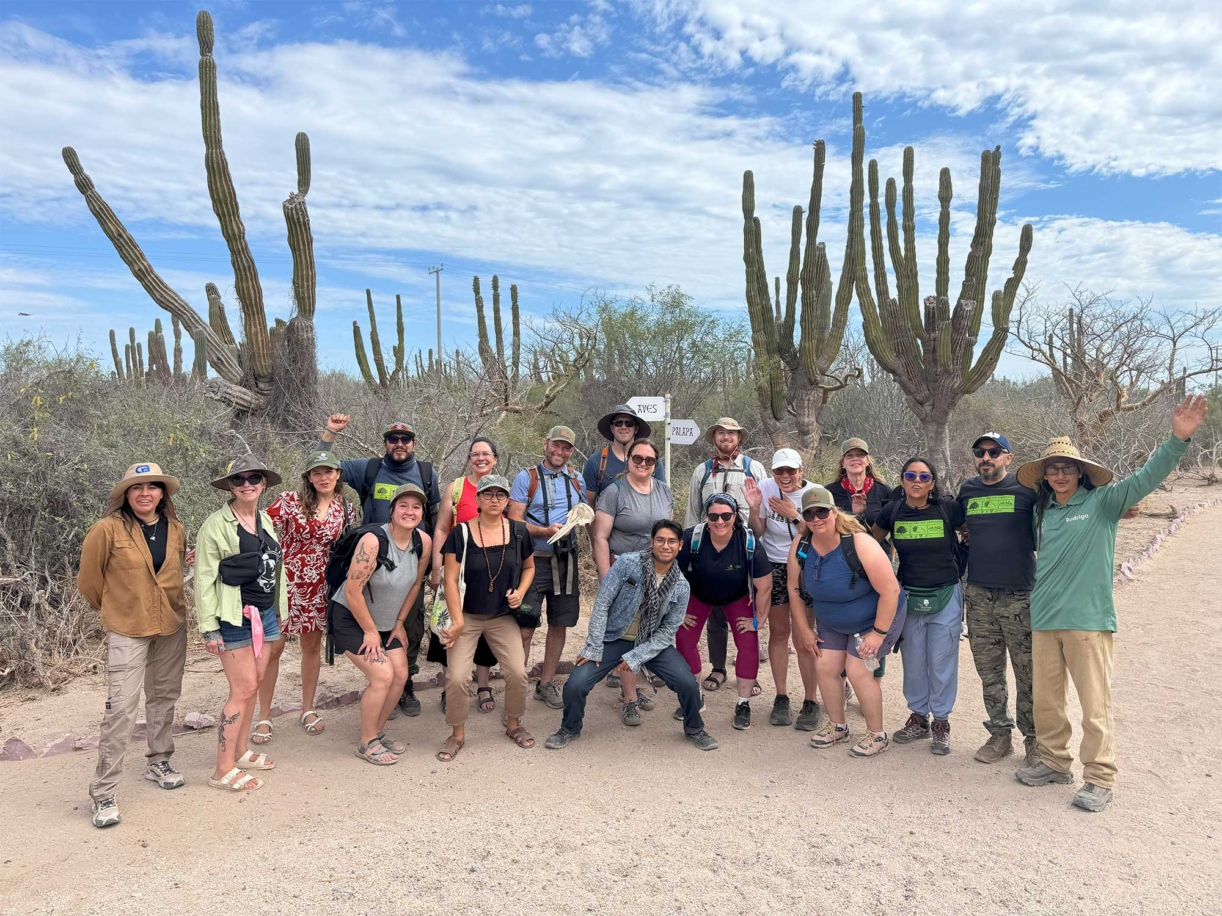
Among the Arboretum’s partners are researchers from Mexico’s science institute Centro de Investigaciones Biológicas del Noroeste, or CIBNOR. CIBNOR researchers helped facilitate the forest immersion trip and provided a tour of their research and campus in La Paz, Baja California Sur.
“The greatest lesson I learned from actively working to save the arroyo oak is also the greatest lesson we as teachers learn in the classroom: Everything starts and ends with relationship-building,” said Austin Sanders, middle school science teacher at William H. Brown STEM Magnet in Chicago. “People must know you care for them before they want to work with you. The community that I got to be a part of on this trip, facilitated by Arboretum staff, was genuine and effective.”